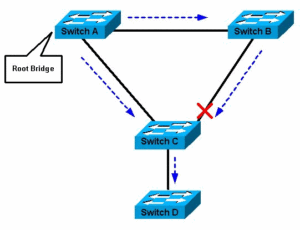Basic requirements of a Data Center

Hi Folks! In this post we are going to discuss which the requirements of a data-center network are. The post will be a bit different, because we will present devices which could actually fill the needs that we are going to expose.
Keep always in mind that being able of billing all time is essential for many business, and if this is your case, you shall be concerned of balancing your traffic across your network; because if some time, the level of demands in your servers it’s too high for being processed by the designated hardware, those demands of service could be lost and this could make you stop earning money. The qualities that you need to avoid these situations are redundancy, resilience and balancing, and after doing some research we have found some hardware that covers these needs in a very professional mode.
We are going to recommend you to use the switches 7124FX which were designed for covering these issues. Arista covers this need by including a 16-way equal-cost multi-path-routing for load balancing and redundancy.
https://www.arista.com/assets/data/pdf/7124FX/7124FX_Data_Sheet.pdf
Our next council goes to the matter of the physical fragility of the elements in a network, it’s natural that the hardware keeps crashing, and as a result of these incidents failures of service can happen, with the consequent result of a decrease of our productivity. We can avoid this by building a redundant network. Make sure that there is various paths to arrive every place across your network, don’t let everything depends on things as one single Ethernet link. We would like to suggest you using etherchannels, this is a type of virtualization where multiple links can act as one single link, they can follow the same paths or use different routes instead; as you see they are very flexible and a current trend in the networking world.
There is also a little tip that we did wanted to give you too, it’s about STP, STP it’s a protocol which avoid possible collisions and traffic jams by setting some interfaces in a state where they can’t send or receive anything but STP packets. The council, it’s avoiding this protocol; the thing is that it takes too much CPU cycles, time and sacrifices to work on networks which need a high-performance; you can avoid it by doing a smart configuration of your network, where not many jams can occur, and by using some other techniques like the etherchannel where multiple links act as just one.
If you need constant software updates or high level of maintenance, you may think also on having two different kinds of workspaces. Pre-production and Production, this is because if your business is going to evolve and you need an update of your online service, it’s better that you don’t show unfinished services (bad image) to your potential customers, but your developers may need to test the new software on the data-center, with two differentiated workspaces, you can do this.
We found a solution for this last need that liked us a lot, so we wanted to share it with you; it’s called IBM Storwize V5000 and it’s a hybrid solution which will let you store software with several advantages respect other devices. In first place it let you virtualize, so you can change the way you are storing and it does not have to affect your operating mode of work, but it also let you build structures of storage so you can build clusters. Moreover, we also found that it got incorporated some kind of technology to achieve remote duplication of the information, but we didn’t found how does it work.
Finally, you need to interconnect all the devices, but you don’t want to do it without caring about the links that you are choosing. The correct way to do it, is thinking on the network requirements in every segment of it, nowadays the storage devices of every layer of the network do not only do functions of containing data but also pre-computed solutions for multiple events, so this storage elements of the network need to work at high-speed in order to save CPU cycles to the rest of the network, this is achieved by using Fibre Channel when connecting the storage elements with the rest of the network. The server side of the network can be connected yet with simple Ethernet, but for a proper performance should work at last at 10Gig Ethernet or more, this is because the correct performance of the virtualized networks starts at 10GbE or 40 GbE, and considering that the virtualization is a huge part of the future of the scalability in the data-centers, you should really consider this.


